Chemicals and Harmful Substances
Chemicals and harmful substances can cause you injury or ill health. They can be found in the home and at work – examples include adhesives, paints, cleaning agents, fumes from soldering and welding, grain dust and bacteria. Earlier, bacteria classed as biological hazard.
These warning signs are used to identify different types of harmful substances:
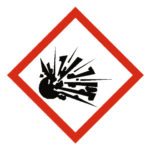
Explosive
• Explosives
• Self-reactive substances and mixtures, types A, B Organic peroxides, types A, B
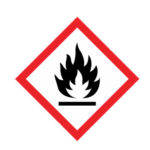
Flammable
• Flammable gases, aerosols, liquids or solids.
• Self-reactive substances and mixtures.
• Pyrophoric liquids and solids.
• Self-heating substances and mixtures.
• Substances and mixtures, which in contact with water emit flammable gases.
• Organic peroxides.
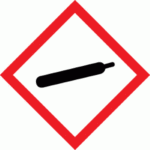
Compressed Gas
• Compressed gases, liquids and solids.
• Liquefied gases.
• Refrigerated liquefied gases.
• Dissolved gases.
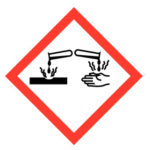
Corrosive
• Corrosive to metals.
• Corrosive to skin.
• Potential to cause severe eye damage.

Toxic
• Acute toxicity (Category 1-3).
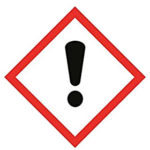
Warning
• Acute toxicity (Category 4).
• Skin and eye irritation.
• Skin sensitisation.
• Specific target organ toxicity.
• Respiratory tract irritation.
• Narcotic effects.
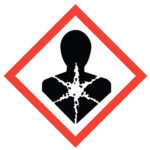
Long Term Health Hazard
• Respiratory sensitisation.
• Germ cell mutagenicity.
• Carcinogenicity (health hazard).
• Reproductive toxicity.
• Specific target organ toxicity.
• Aspiration hazard.
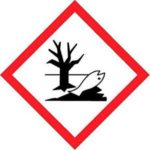
Hazardous to Environment
• Hazardous to the aquatic environment
How can you be exposed to chemicals?
Chemicals can come into contact with your bare skin and eyes
Some substances, such as fuels and oils, can pass through the skin, while others get into the body via cuts and grazes. This is known as absorption.
Chemicals can also get into the body by deliberate or accidental puncture of the skin – for example through contaminated syringes. This is known as injection.
This happens most often through swallowing contaminated food or drink. This is known as ingestion.
Breathing in harmful gases and dusts, such as asbestos, means they can stay in the lungs and cause a variety of diseases, such as asbestosis. This is known as inhalation.
Some substances have a Workplace Exposure Limit (WEL). This defines an exposure level that mustn’t be exceeded. Information on the WEL for a particular substance can be found on the safety datasheet that accompanies all harmful substances. Not exceeding the WEL doesn’t guarantee health protection – individual differences in human susceptibility make this impossible.
Remember
• Some substances are more harmful than others.
• Some will harm you quickly.
• Some require large doses before they cause harm.
• Some may take years of exposure before any effects are seen.
Employers responsibilities
Your employer will need to make sure that risks from harmful substances in the areas you work are managed effectively. To do this they will need to:
• Set up processes and activities to minimise the release and spread of harmful substances.
• Take note of all the ways in which people can be exposed when designing control measures.
• Control exposure in ways that are appropriate for the level of risk to health.
• Choose the most effective and reliable control measures. For example, consider the following: replacing the substance with a safer alternative; using the substance in a safer form; using the smallest amount possible; enclosure and ventilation; and using appropriate work methods.
• Provide personal protective equipment where you can’t control exposure any other way, and make sure it’s used properly, after appropriate training.
• Check your measures are working well.
• Inform and train all workers about the hazards and risks from the substances they work with and what they should do if they’re exposed.
• Make sure your controls don’t increase other safety and health risks.
• Introduce a health surveillance programme if necessary.
Your responsibilities:
• Always to use gloves, goggles and other protective equipment. This equipment should be suitable to prevent contact with harmful substances.
• Always to use the correct mask or breathing apparatus to prevent them breathing in chemicals, to make sure that it’s clean, undamaged and fits properly.
• To avoid eating or drinking in workplaces where hazardous chemicals or substances are being used.
• Always to take personal hygiene precautions (such as washing hands and changing clothing) before eating, drinking or smoking.
